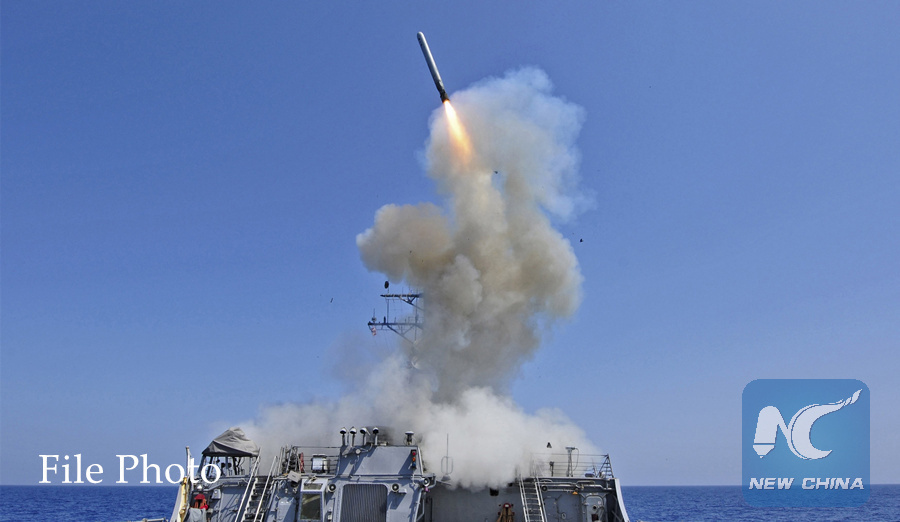
The guided-missile destroyer USS Barry launches a Tomahawk cruise missile from the ship's bow in the Mediterranean Sea in this U.S. Navy handout photo taken March 29, 2011. (Reuters Photo)
MOSCOW, Feb. 1 (Xinhua) -- Moscow will continue to resolutely counter "destructive steps" in arms control, disarmament and non-proliferation, the Russian Foreign Ministry said Friday after the United States announced it is leaving a landmark nuclear restriction pact with Russia.
To that end, Moscow will "consolidate the international community around a constructive agenda to strengthen the existing international legal system," the foreign ministry said in a statement.
U.S. Secretary of State Mike Pompeo announced earlier in the day that the United States is withdrawing from the Intermediate-Range Nuclear Forces (INF) Treaty, citing Russia's violation of the deal, a claim that has been repeatedly denied by Moscow.
"We drew attention to a new surge in absolutely unfounded critical comments from the United States regarding the implementation of Russian commitments in the field of arms control, disarmament and non-proliferation," the ministry said.
"The Russian Federation unwaveringly, consistently and unconditionally fulfills its obligations in the field of arms control, disarmament and non-proliferation," it reiterated.
Moscow remains open to close coordination and full-scale cooperation with like-minded states in the interests of strengthening strategic stability and international security, it added.
Pompeo's announcement, made nearly 60 days after Washington threatened to quit the historic INF Treaty, will start a six-month countdown period, which will lead to a permanent exit from the pact inked in 1987 between the United States and the then-Soviet Union.
The INF Treaty marked the first-ever pact reached by Washington and Moscow on nuclear disarmament and a major step forward in restricting the arms race.
However, the two sides have been accusing each other of violating the arms control agreement in recent years amid increasing tensions.

